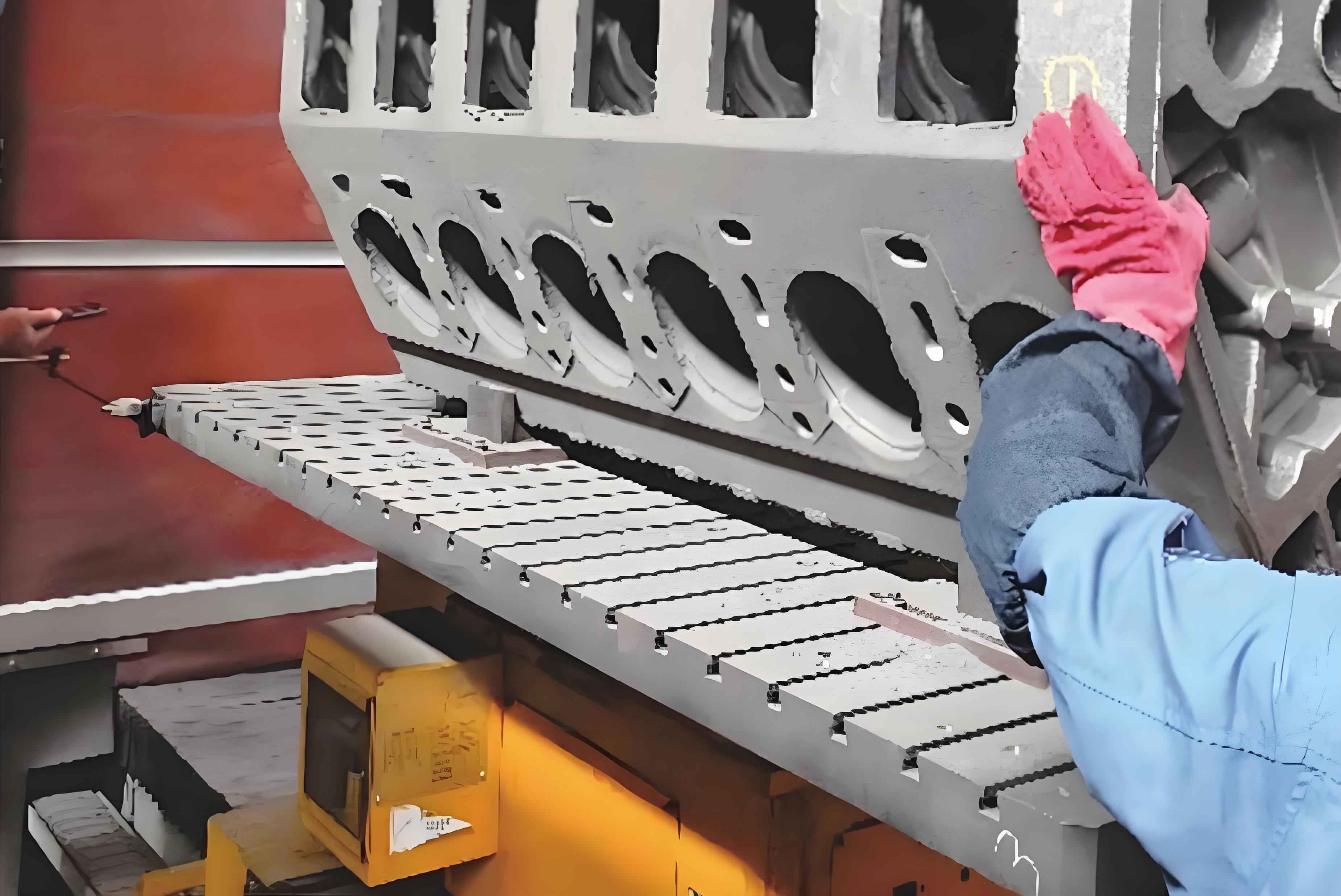In recent years, sand 3D printing technology has revolutionized traditional casting processes, particularly in the production of complex components like engine cylinder blocks. This article explores the technical principles, process innovations, and quality improvements achieved through this advanced manufacturing approach.
1. Technical Principles of Sand 3D Printing
The binder jetting process enables direct fabrication of sand molds through layer-by-layer deposition, governed by the fundamental equation:
$$ \text{Layer Time} = \frac{\text{Mold Height}}{\text{Layer Thickness}} \times (\text{Printing Speed} + \text{Curing Time}) $$
Key process parameters for engine cylinder block production include:
| Parameter | Value Range | Optimal Setting |
|---|---|---|
| Layer Thickness | 0.2-0.3 mm | 0.25 mm |
| Binder Saturation | 80-120% | 105% |
| Curing Temperature | 50-80°C | 65°C |
| Compressive Strength | 1.5-3.0 MPa | 2.4 MPa |

2. Process Design for Engine Cylinder Blocks
The gating system design for engine cylinder blocks follows fluid dynamics principles:
$$ Q = v \times A = \sqrt{2gh} \times \pi r^2 $$
Where:
Q = Flow rate (cm³/s)
v = Velocity (cm/s)
h = Pouring height (cm)
Core assembly optimization reduces components from 30-40 traditional cores to 3 integrated units:
| Core Number | Functions Integrated | Weight Reduction |
|---|---|---|
| Core 1 | Cylinder bore, water jacket | 42% |
| Core 2 | Oil galleries, bolt bosses | 37% |
| Core 3 | Main bearing caps, mounts | 51% |
3. Quality Control Metrics
The dimensional accuracy improvement follows normal distribution:
$$ \sigma = \sqrt{\frac{1}{N}\sum_{i=1}^{N}(x_i – \mu)^2} $$
Where:
σ = Standard deviation
μ = Mean dimension
N = Sample size
| Parameter | Traditional Casting | 3D Printed | Improvement |
|---|---|---|---|
| Surface Roughness (Ra) | 100 μm | 25 μm | 75% |
| Dimensional Tolerance | ±1.5 mm | ±0.35 mm | 76.7% |
| Sand-Metal Ratio | 15:1 | 2.5:1 | 83.3% |
| Yield Rate | 50% | 98% | 96% |
4. Thermal Analysis and Solidification
The Fourier heat equation governs solidification in engine cylinder blocks:
$$ \frac{\partial T}{\partial t} = \alpha \left( \frac{\partial^2 T}{\partial x^2} + \frac{\partial^2 T}{\partial y^2} + \frac{\partial^2 T}{\partial z^2} \right) $$
Where:
α = Thermal diffusivity (m²/s)
T = Temperature field
t = Time
5. Economic Analysis
The cost model for engine cylinder block production compares traditional and additive methods:
$$ C_{total} = C_{material} + C_{energy} + C_{labor} + C_{tooling} $$
| Cost Factor | Traditional ($) | 3D Printed ($) | Savings |
|---|---|---|---|
| Mold Making | 15,000 | 0 | 100% |
| Material Waste | 8,200 | 1,500 | 81.7% |
| Labor Cost | 25,000 | 8,000 | 68% |
| Total/1000 units | 48,200 | 9,500 | 80.3% |
6. Future Development Directions
The future of engine cylinder block manufacturing lies in multi-material printing:
$$ \text{Composite Strength} = \sum_{i=1}^{n} V_i \times \sigma_i $$
Where:
V = Volume fraction
σ = Material strength
This technical evolution will further enhance the performance and manufacturing efficiency of engine cylinder blocks while reducing environmental impact through optimized material usage and energy consumption.
